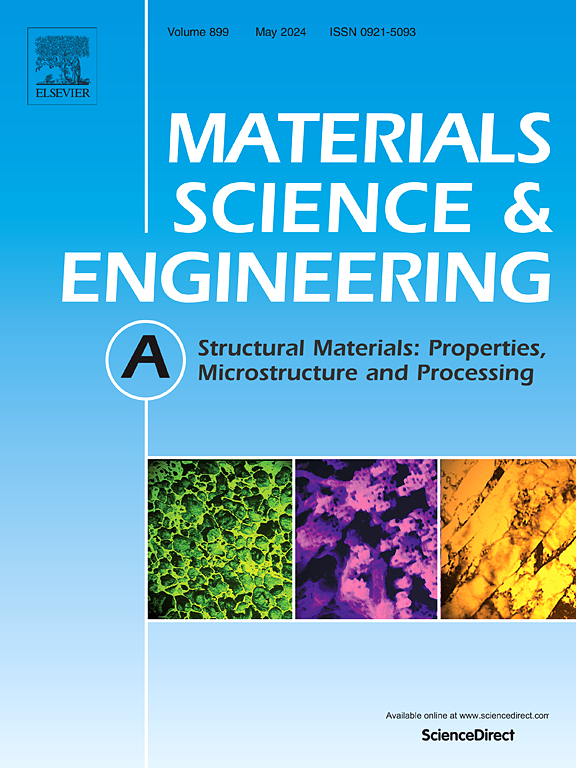中熵合金FeCoNiCr颗粒增强钛复合材料界面显微组织及强化机理
IF 6.1
2区 材料科学
Q1 MATERIALS SCIENCE, MULTIDISCIPLINARY
引用次数: 0
摘要
钛基复合材料的基体和界面是材料科学研究的重要课题。与传统的陶瓷颗粒增强tmc不同,本研究通过火花等离子烧结(SPS)制备的FeCoNiCr中熵合金(MEA)颗粒的固溶和二次相强化,增强了界面结合和多重强化效果。研究了复合材料的微观组织、界面层特征、力学性能和强化机理。实验结果表明,界面层由FeCoNiCr与Ti6Al4V基体相互作用形成的多层FCC固溶体和σ相结构组成,并具有层错和孪晶等显微组织特征。随着MEA含量的增加,复合材料的抗拉强度、屈服强度和硬度均有所提高。强度和延性的最佳平衡达到了3wt % MEA,产生了前所未有的抗拉强度1162mpa和延伸率11%。这些改进是由于晶粒细化、奥罗温强化和固溶强化。在MEA/基体界面处形成多层复杂结构,解决了陶瓷颗粒增强tmc结合不良的局限性,为复合材料设计提供了重大进展。本文章由计算机程序翻译,如有差异,请以英文原文为准。
Interface microstructure and strengthening mechanisms of medium-entropy alloy FeCoNiCr particle reinforced titanium composites
The matrix and interface of Titanium Matrix Composites (TMCs) have posed significant challenges in material science. Unlike traditional ceramic particle-reinforced TMCs, this study achieved enhanced interface bonding and multiple strengthening effects through solid-solution and secondary phase strengthening with medium-entropy alloy (MEA) particle of FeCoNiCr fabricated by spark plasma sintering (SPS). The microstructure, features of interface layer, mechanical properties and strengthening mechanisms were investigated. Experimental results revealed that the interface layer comprised a multilayer FCC solid solution and σ-phase structure formed by the interaction between the FeCoNiCr and the Ti6Al4V matrix, along with microstructural features such as stacking faults and twins. The tensile strength, yield strength and hardness of the composites improved with increasing MEA content. The optimal balance of strength and ductility was achieved at 3 wt% MEA, yielding an unprecedented tensile strength of 1162 MPa and elongation of 11 %. These improvements are attributed to grain refinement, Orowan strengthening and solid solution strengthening. The formation of a multilayer complex structure at the MEA/matrix interface addressed the limitations of poor bonding in ceramic particle-reinforced TMCs, offering a significant advancement in composite material design.
求助全文
通过发布文献求助,成功后即可免费获取论文全文。
去求助
来源期刊

Materials Science and Engineering: A
工程技术-材料科学:综合
CiteScore
11.50
自引率
15.60%
发文量
1811
审稿时长
31 days
期刊介绍:
Materials Science and Engineering A provides an international medium for the publication of theoretical and experimental studies related to the load-bearing capacity of materials as influenced by their basic properties, processing history, microstructure and operating environment. Appropriate submissions to Materials Science and Engineering A should include scientific and/or engineering factors which affect the microstructure - strength relationships of materials and report the changes to mechanical behavior.
 求助内容:
求助内容: 应助结果提醒方式:
应助结果提醒方式:


